Must See Places To Visit In Peru: Insights From 14 Pro Travelers
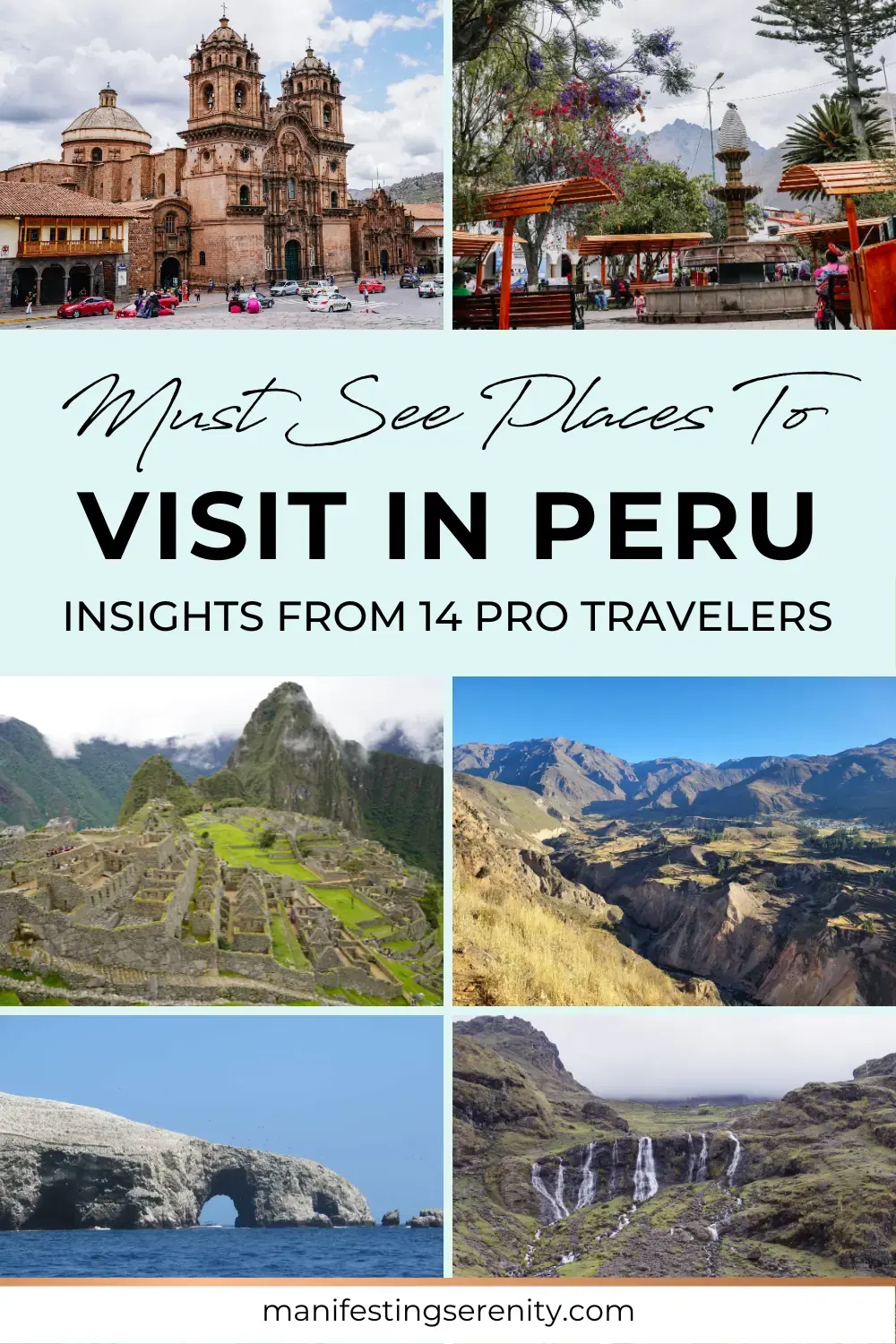
Of course, there are many articles on some of the best places to visit in Peru, but what if we took it up a notch and gathered the best places from many worldly professional travelers? Well, that’s exactly what we’ve done!
Not only do you get to see the insights and travel recommendations from me, but also many other professional travelers, all ones that offer their own unique perspectives and experiences.
I’ve gathered, not 10, but 23 must-see places to visit in Peru, from over 14 travel professional travelers, including myself. Plus, of course, some from myself as well. Best of all, we’ve also asked them all to add in a little sustainable tip or recommendation for us too.
Some links in this post may be affiliate links or this article may contain sponsored content, which means if you make a purchase, we receive a small compensation at no added cost to you. As an Amazon Associate I earn from qualifying purchases. Any purchases you make helps to keep this blog going and keeps our content free. I truly appreciate your support! Visit my Privacy Policy & Disclosure Policy for more info!
PeruTravel Resources Key
All resources on our site are shared to fuel and inspire you to be able to confidently, courageously, and sustainably explore this beautiful world.
#1. Machu Picchu
Machu Picchu is a place that you’ll hear about all throughout your life, before going, I completely thought that it might be an overhyped place. After all, I’ve been to a few of those. But it turns out, it’s even more beautiful than I could have ever imagined it to be. Actually, I had to literally pinch myself, and blink my eyes many times just to ensure that it was truly reality, I was staring right at one of the wonders of the world. Which exactly why it’s listed as #1 on this list!
In itself, Machu Picchu is incredibly diverse. First, you begin entering a gate, where they’ll direct you to which mountain you’ll first get access and views of. Then you’ll begin walking through the very start of the Incan ruins, where many wild llamas/alpacas reside and casually hang out. The llamas/alpacas have become accustomed to the many tourists and don’t mind if people get close, but please keep in mind they are still wild and can spit at a moment’s notice. So be aware of animal boundaries too! Next, you’ll begin walking through many of the old Incan structures, spotting sacred temples, statues, carvings, and historic markers.
But that’s not all! There’s even a couple of additional mountain tops to hike too, one of them is called Huayna Picchu, offering another infamous view of the ruins. Each offers a new view and perspective of Machu Picchu and the Incan Ruins,
I’ve shared a bit more in this article on the details, history, climate, what to pack, how to get there, booking, what to expect, and everything else in between!

#2. Colca Canyon
Colca Canyon is one of the deepest canyons in the world and offers an impressive landscape and close-up views of the Andean condor, a sacred bird in Incan culture. Located over 100 miles (160.93 km) north of Arequipa it is something that you cannot miss when visiting Peru.
To visit Colca Canyon you can either book a day tour from Arequipa, visit Mirador Cruz del Condor, the best viewing spot for the Andean condors, and relax at the hot springs for the rest of the day. Or you can do a 2 or 3-day Colca Canyon Trek.
I highly recommend doing one of the treks as you get the best views and experience local culture in a more intimate way. The hiking tours offer the flexibility of hiking on your own, but the tour company schedules your lodging and meals.
I am not going to lie, hiking the Colca Canyon is not easy. Especially on the day when you are hiking back out of the canyon. However, it is an amazing experience to walk through the canyon, remote villages, and enjoy this remote beauty.
As in most places in Peru, make sure you carry toilet paper with you when visiting Colca Canyon and do not flush it down the toilet. Most bathrooms have a bin to dispose of toilet paper instead of flushing. The sewer system is practically nonexistent, and all the waste ends up in the rivers. I would also not recommend swimming in the rivers, as tempting as it may be.
By: Dana (Explore With Wine)
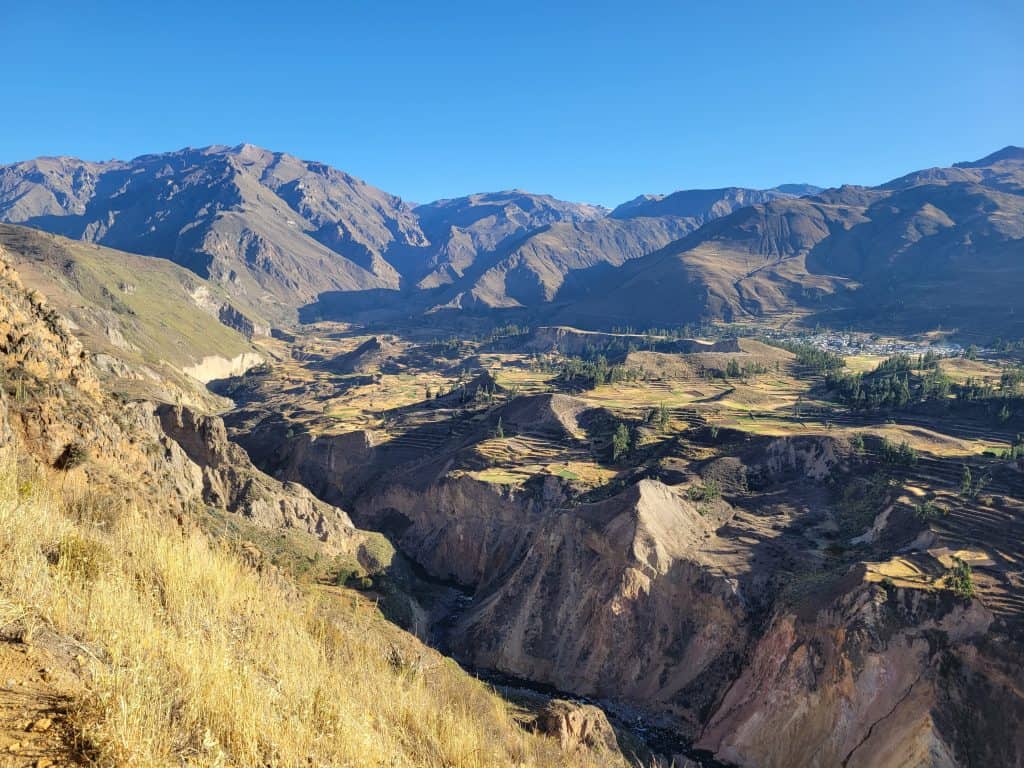
#3. Inca Trail
Now that’s one for the ol’ bucket list! Hiking the legendary Inca Trail path, you’re treading in the ancient footsteps of the Inca civilization, and boy, do they know their scenic routes.
Nestled in the heart of Peru, the Inca Trail is a stunner, with epic mountain vistas, lush rainforests, and mystical historical sites. It’s like stepping into a National Geographic documentary with a pair of hiking boots on!
In terms of sustainability, I’ve got a hot tip for you trailblazers. Try and book your trip with a local sustainability tour. Not only are you supporting the local economy, but these guys are champions at preserving the trail’s natural beauty and cultural heritage. It’s a win-win! (If you want to add a link I suggest them, I did the Inca with them)
What really stole my heart was the sense of adventure. Every day on the trail brings something new – a hidden Inca ruin, a breath-snatching Mountain View, and an encounter with local wildlife. There’s nothing like the feeling of accomplishment when you finally glimpse Machu Picchu at sunrise on the last day. Pure magic!
Here’s a nugget of wisdom from your favorite trail veteran: pack lightly but wisely. Rain gear, layers for those nippy Andean nights, snacks for the trail, and a good pair of hiking boots are a must. Also, embrace the camaraderie on the trail. We’re all in it together, and shared memories of the Inca Trail are memories that last a lifetime.
So, lace up your boots, folks! Adventure, sustainability, and a heck of a good time await you on the Inca Trail.
By: Giorgy (G-Extreme Travel)
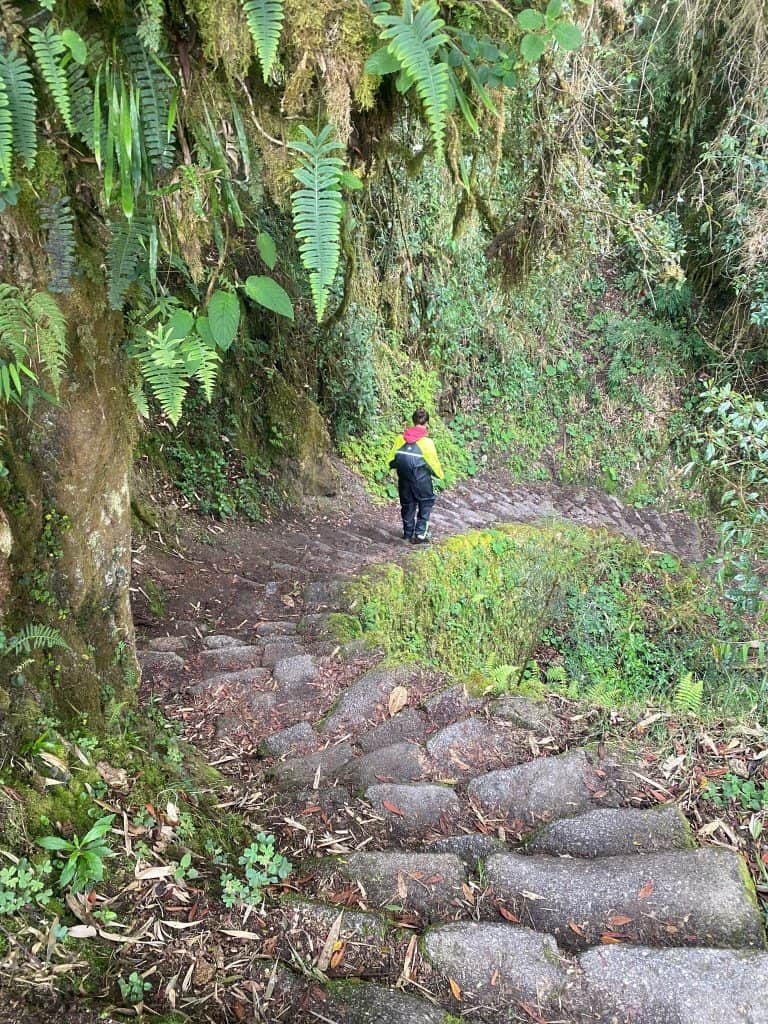
SUBSCRIBE AND JOIN THE COMMUNITY ♡
You’ll also be the first to hear about everything new and juicy, stuff you’ll probably want to know about: Website updates, new products, new articles, inspiration, promotions, and even giveaways!! (You don’t want to miss out on those!) Giveaways can be products, trips, subscriptions and so much more!Welcome! ♡
You have successfully joined our subscriber list, be on the lookout for your welcome email! ♡
#4. Sacred Site Moray
Although there are many sacred sites, none of them quite display such a unique shape. Often being compared to crop circles because of such a uniform circle shape and rare site. Not to mention the multiple layer, known as terraces, that had been created and carefully placed by the Incas. These terraces were put in place to best support the crops and ensure that they were evenly watered, essentially setting up systems.
Previously, they had allowed visitors to walk around and through the terraces, but they have started to gradually crumble. Which has restricted visitors to the outer ridges, although still up close to the terraces, it’s just no longer on them.
It’s also important to note that the best time to view the Sacred Site Moray is after the rainy season, when it’s brightly green and flourishing. I’d gone right before the rainy season, leaving it looking a bit more brown. Although both are astonishing, the iconic photos show it after the rainy season.
Above all, the many terraces shapes, designs, and overall structure is still bewildering; regardless of the color.
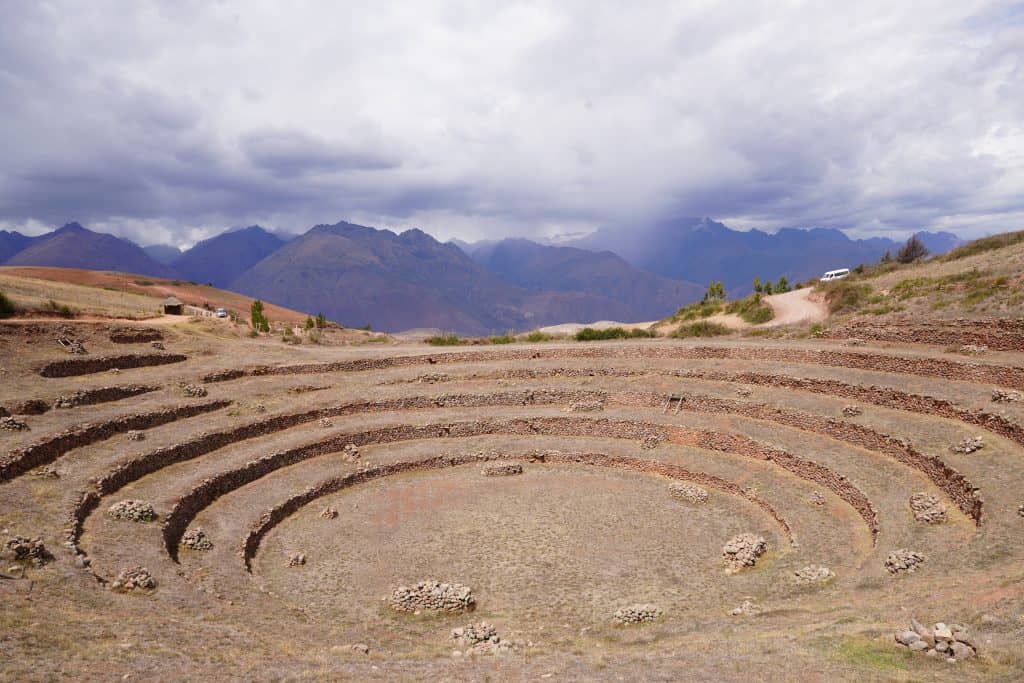
#5. Archaeological Sites – Sillustanti
The chullpas of Sillustani served as a burial ground for the nobility of the Colla people. These stone pillars lie atop a hill overlooking Lake Umayo. They face east towards the sun, allowing the dead to communicate directly with the Sun God. The views are unlike anything I’ve ever seen. From that high up, I felt like I was on top of the world. Bring a hat and wear long sleeves–the high altitude will leave you sunburnt and if you’re unlucky like I am, you’ll end up with a burnt scalp. The plaques explaining the discoveries made at this archaeological site are in both English and Spanish, so I left with a thorough understanding of the history. Resist chasing after the ducks and stay on the trail as much as possible as you walk amongst the towering stone pillars.
The walkway leading up to the ruins is lined with locals selling food and handcrafted goods. It’s the epitome of everything I love about Perú: bright colors, handcrafted goods, great cuisine, and lovely people. Bring cash for the toilets and to buy souvenirs from these stalls to support the local community. There were more animals than I expected on this walkway. Look out for chickens and stray dogs but don’t be alarmed if the dogs come up to you. They’re harmless and at worst they will follow you around begging for some of your corn on the cob.
By: Catherine Shonack (Adventure Knocked And I Answered)
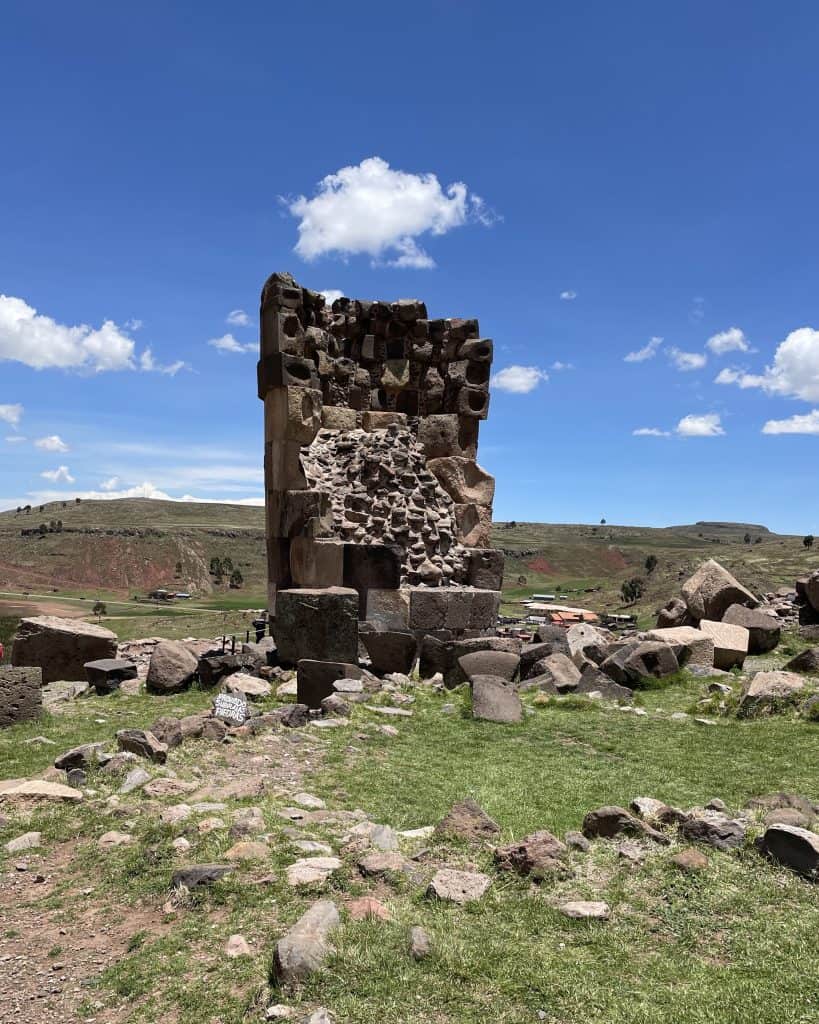
#6. Amazon River & Amazon Rainforest
Visiting the Amazon is something you must see when in Peru. You make your way to Puerto Maldonado and then board a boat and venture down the Amazon River through the Tambopata National Reserve. You are now in the heart of the Amazon Rainforest and surrounded by a vast and biologically rich tropical ecosystem.
When I visited the Amazon rainforest, I stayed at two ecolodges, Refugio Amazonas and Tambopata Research Center. Both of these places are owned by Rainforest Expeditions, who focus on sustainability programs and conservation to help keep macaws and other rare animals thriving. I loved that profits from these lodges are used for conservation efforts and to support the ongoing research conducted at the center.
They offer great services like providing biodegradable soap and shampoo for their guests to use, as well as using biodegradable products to clean the linens and bathrooms. They also only have electricity available three times a day in their common areas.
In my opinion, the best feature was in your room. Imagine having a room with only three walls! You have an open wall to the Amazon rainforest. You can hear and see the jungle with no barriers. It was so cool…well except when you wake up in the middle of the night to ‘crunching’ on the ground outside your room and you know it isn’t something small…but you don’t get out of bed, just in case. But don’t worry, I was safe in my room, under my mosquito net.
The Andes Mountains are a must for any traveler to Peru. Get a glimpse into the lives of native people by visiting a traditional Quechua community. Cusco is the closest city – it’s about 45 minute drive (19 miles on a windy road) to the rural area outside of Chinchero. This day trip will lead you into the heart of Andean culture!
When you reach the Quechua community, you are welcomed by bright smiles, small gifts, and traditional song and dance, native to the strong hospitality of the Quechua people. You’ll introduce yourself and go around a circle meeting a number of locals from the community, usually including the cutest children! They will be dressed traditionally, and will allow you to try on their traditional dress, as you go throughout the day, as well.
It’s likely that you’ll experience a traditional Andean ceremony, where natives offer blessings to Pachamama, the Earth Mother. They express thankfulness for the land and strive to seek harmony with the land.
You will also learn about farming and how the locals sustain their communities. We saw what was being harvested and the food and products that it is used for. You can feed the alpacas and llamas on their farm, too!
Additionally, you will have the opportunity to participate in hands-on experiences. Local women will teach you the intricate art of weaving, using threads sourced from local plants and animals, and then dyed with natural items. This yarn is then woven into sweaters, socks, rugs, and other pieces with symbolic messaging in each pattern.
Visiting the Quechua community is the best way to learn about the roots of the Andes Mountain and traditional culture!
By: Melanie Seneviratne (The World Travel Girl)
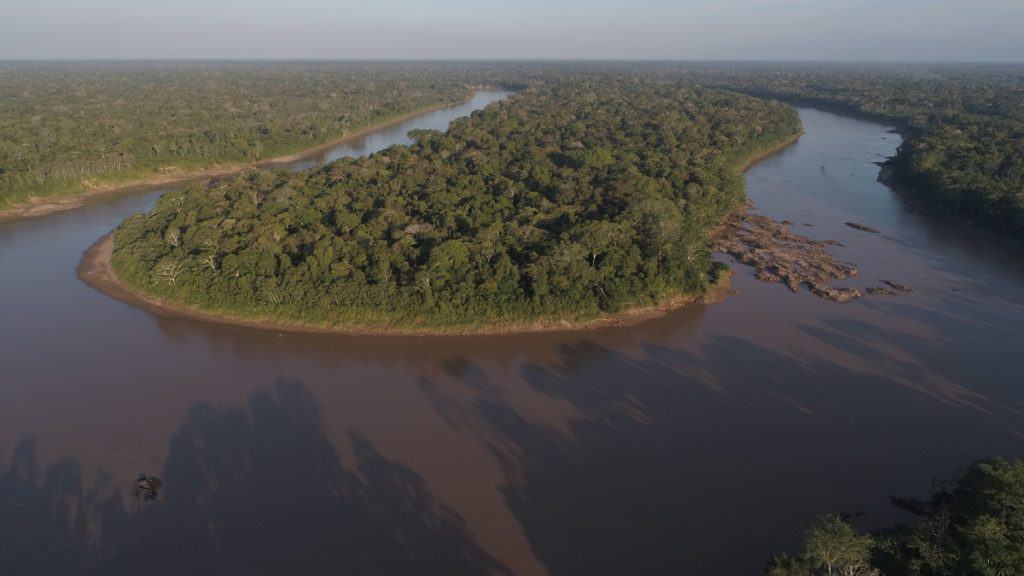
#7. Lares Peru Hot Springs / Baños Termales de Lares
One of the most immersive and incredible experiences was soaking in the Lares Peru Hot Springs. Although the water can look like a vat of hot chocolate mixed with some horchata, it’s worth spending some time in. But it could be worth bringing some to sip and enjoy.
The mineral-rich water relaxes the muscles, soothes the soul, and leaves you feeling refreshed.
Thankfully, there are multiple different pools, each at a different temperature, to accommodate everyone’s preference. As well as private pools, showers, and lockers to also add the finishing touches,
But that’s not all, the drive through the mountains serves as it’s own experience. Alongside the roads and towering mountains; many alpacas and llamas roam. As well as the dogs that heard them. But the diverse terrain that they call home, is absolutely a sight to set eyes on making it an entirely beautiful experience.
Oh, and just a heads-up, the roads get incredibly windy, so be sure to bring some nausea medicine and water in a reusable flask. Also, please note that no glass is allowed in the Hot Springs.
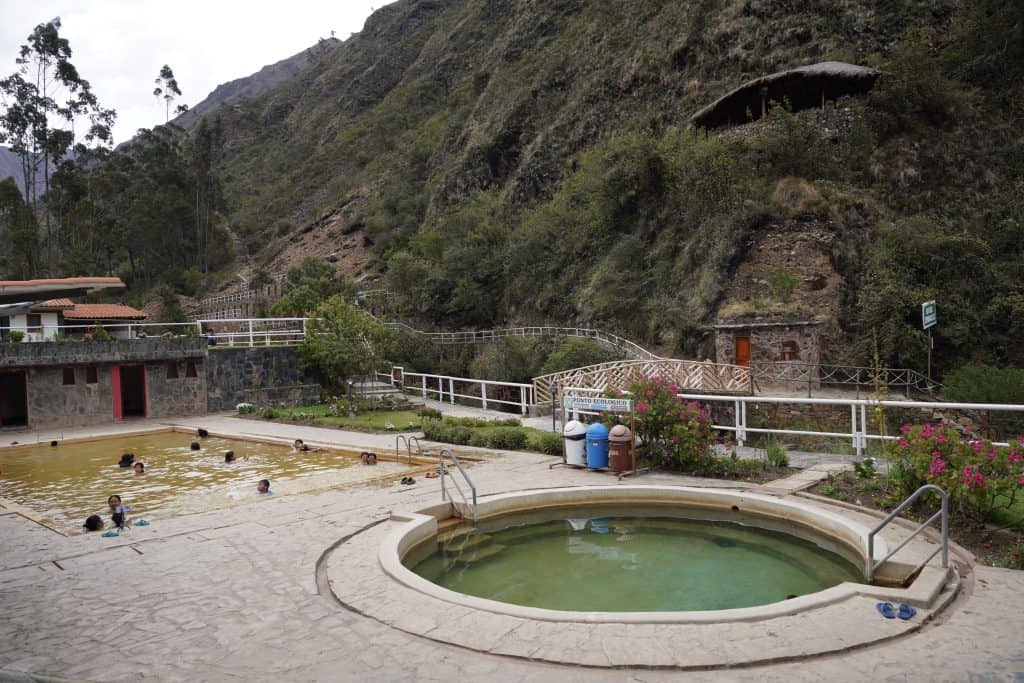
#8. Andes Mountains Quechua community
The Andes Mountains are a must for any traveler to Peru. Get a glimpse into the lives of native people by visiting a traditional Quechua community. Cusco is the closest city – it’s about 45 minute drive (19 miles on a windy road) to the rural area outside of Chinchero. This day trip will lead you into the heart of Andean culture!
When you reach the Quechua community, you are welcomed by bright smiles, small gifts, and traditional song and dance, native to the strong hospitality of the Quechua people. You’ll introduce yourself and go around a circle meeting a number of locals from the community, usually including the cutest children! They will be dressed traditionally, and will allow you to try on their traditional dress, as you go throughout the day, as well.
It’s likely that you’ll experience a traditional Andean ceremony, where natives offer blessings to Pachamama, the Earth Mother. They express thankfulness for the land and strive to seek harmony with the land.
You will also learn about farming and how the locals sustain their communities. We saw what was being harvested and the food and products that it is used for. You can feed the alpacas and llamas on their farm, too!
Additionally, you will have the opportunity to participate in hands-on experiences. Local women will teach you the intricate art of weaving, using threads sourced from local plants and animals, and then dyed with natural items. This yarn is then woven into sweaters, socks, rugs, and other pieces with symbolic messaging in each pattern.
Visiting the Quechua community is the best way to learn about the roots of the Andes Mountain and traditional culture!
By: Eleanor (Elevate Your Escapes)
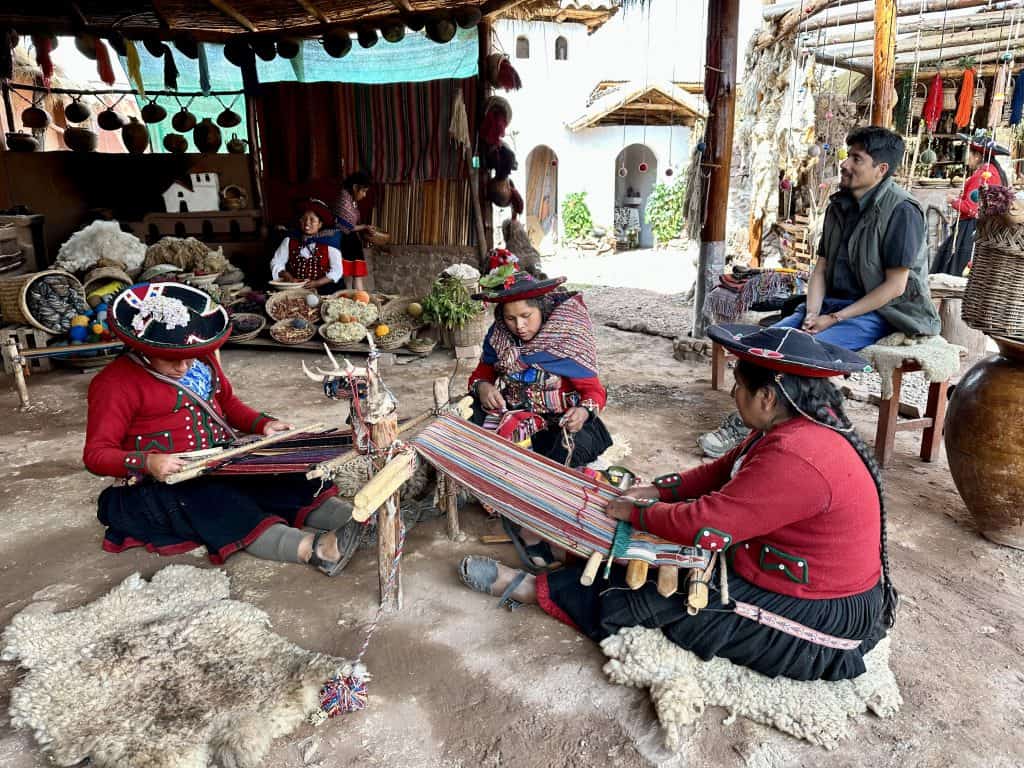
#9. Ballestas Islands
If you love seeing wildlife and don’t mind a boat trip, then the Ballestas Islands need to be on your Peru bucket list! Located just off the Pacific coast of Peru, the islands are uninhabited and home to penguins, pelicans, sea lions and thousands of birds – some of which are at threat of extinction!
Despite being a tourist hotspot and countless boat tours running, the area is a protected conservation site. Part of the tour cost includes a national reserve fee, which goes toward protecting the area. Trips are cheap and easy to book when you reach Paracas – the coastal town from which the tours leave.
But this is far from a chilled-out cruise! First, you’ll have to face the choppy seas of the Pacific with the journey to the islands taking around 30 minutes. I recommend wristbands or tablets if you get seasick easily!
And then once you’re there, it’s pretty non-stop! There are animals everywhere, in the water, in the sky and on the rock faces around you – have your camera at the ready! But to paint the full picture, do expect it to be loud with thousands of animals together and also expect it to smell a bit too!
This is a unique place, even in a country as diverse and varied as Peru. I couldn’t recommend it more, especially since you only need half a day to visit!
By: Zoe Schafer (Zoe Goes Places)
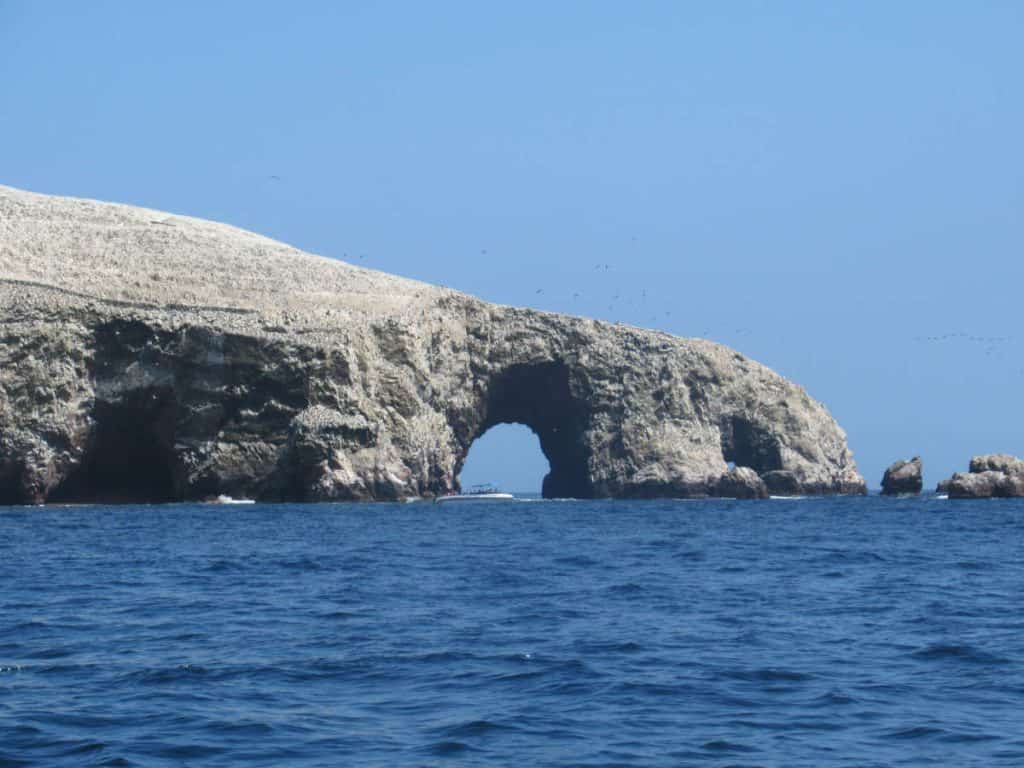
#10. Tambopata National Reserve
One of the must-see destinations in Peru is the Tambopata National Reserve. Comprising over 1000 square miles of pristine Amazon jungle, this reserve is one of the most biodiverse places on the planet. My family recently visited the Tambopata National Reserve, and it was one of the highlights of our trip to Peru.
Without question, one of the best reasons to visit the Tambopata Reserve is to observe the unique flora and fauna of the area. The reserve is home to thousands of species including reptiles, birds, caiman, sloths, monkeys, jaguars, and insects (lots of insects). When I visited the Tambopata Reserve, one of my favorite parts was gliding through the glassy oxbow-shaped Lake Sandoval. Here we were fortunate enough to witness a family of endangered river otters frolicking in the water.
While we explored the Tambopata Reserve, we had the opportunity to try numerous jungle tours. Options include adrenaline pumping canopy tours, night tours to search the river banks for caiman and capybara, and seeing thousands of brilliantly colored macaws at clay licks.
During a visit to the Tambopata Reserve, it is important to limit the impact on the fragile jungle environment. We stayed at Inkaterra Reserva Amazonica, one of the ecolodges along the Madre de Dios River. I highly recommend Inkaterra because this hotel chain has carbon neutral properties and is a leader in sustainable tourism in Peru. In addition, try to be mindful of what you wear to the Amazon, such as using eco-friendly sunscreen.
For thrilling jungle tours and viewing diverse species of plants and animals, I highly recommend visiting Tambopata National Reserve in southeastern Peru. The Tambopata National Reserve is a must-visit destination in Peru for those seeking an unforgettable jungle adventure.
By: Jennifer Femrite (Seeking Stamps)
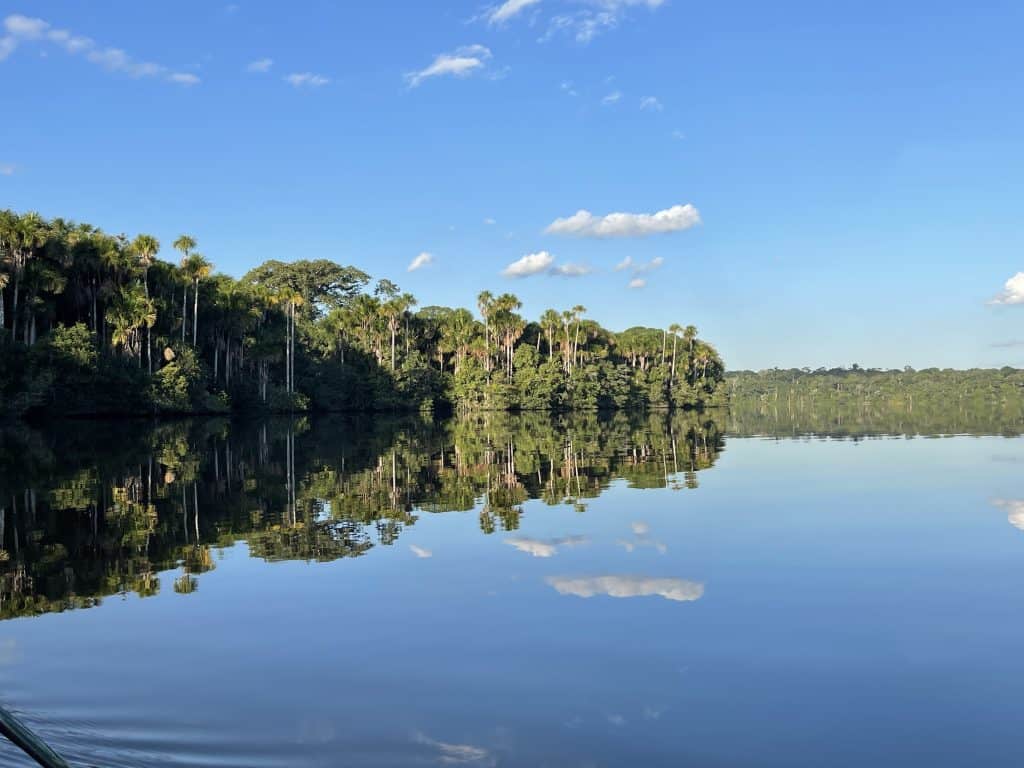
#11. Sacred Valley
The Sacred Valley is known for it’s strong energy throughout the canyon, that flows from Machu Picchu. A massive draw is a transformative energy, many retreat centers have decided to pair with this energy, creating a massive healing space.
After staying in the Sacred Valley for multiple months, I’d come to feel my emotions effortlessly rise to the surface and layers of pain release. Many visitors have shared similar experiences. Once, after a yoga session, I was told by the teacher that the Sacred Valley also calls to people, when it’s time to come, return, or even to live there. In a sense, it’s a magical place.
There are retreat centers, yoga studios, wellness hops, spiritual events, and an abundant amount of community in the Sacred Valley, making it an amazing stop for those seeking something special in Peru.

#12. Aguas Calientes
Aguas Calientes is one of the most visited towns in the world, but one that few people have heard of. And that’s because it is the entry point to the famous Machu Picchu Inca site. It has everything needed for a quick visit of a few hours or a couple of days, such as restaurants, souvenir shops, hotels, and bars.
I found the town fascinating. How families lived in this closed-off town purely to support tourism, with the contrast of the local children playing football surrounded by visitors from around the world.
It also caters for everyone. Just outside the town is one of the fanciest hotels in the world. But there’s also budget options. High-standard restaurants and local stalls. It’s the best of mass tourism.
And what makes Aguas Calientes (and Machu Picchu) unique, is that there are no roads in or out. In fact, the only way to get to Aguas Calientes is by train or walking.
Because of this, thinking about your environmental footprint is especially important when visiting Aguas Calientes. As everything comes in or out by train – including trash, recycled items, food and drink – and space is limited. Try to think about what you need to bring, and consider taking anything you no longer need back to Cusco with you to dispose of.
By: Zoe Schafer (Zoe Goes Places)
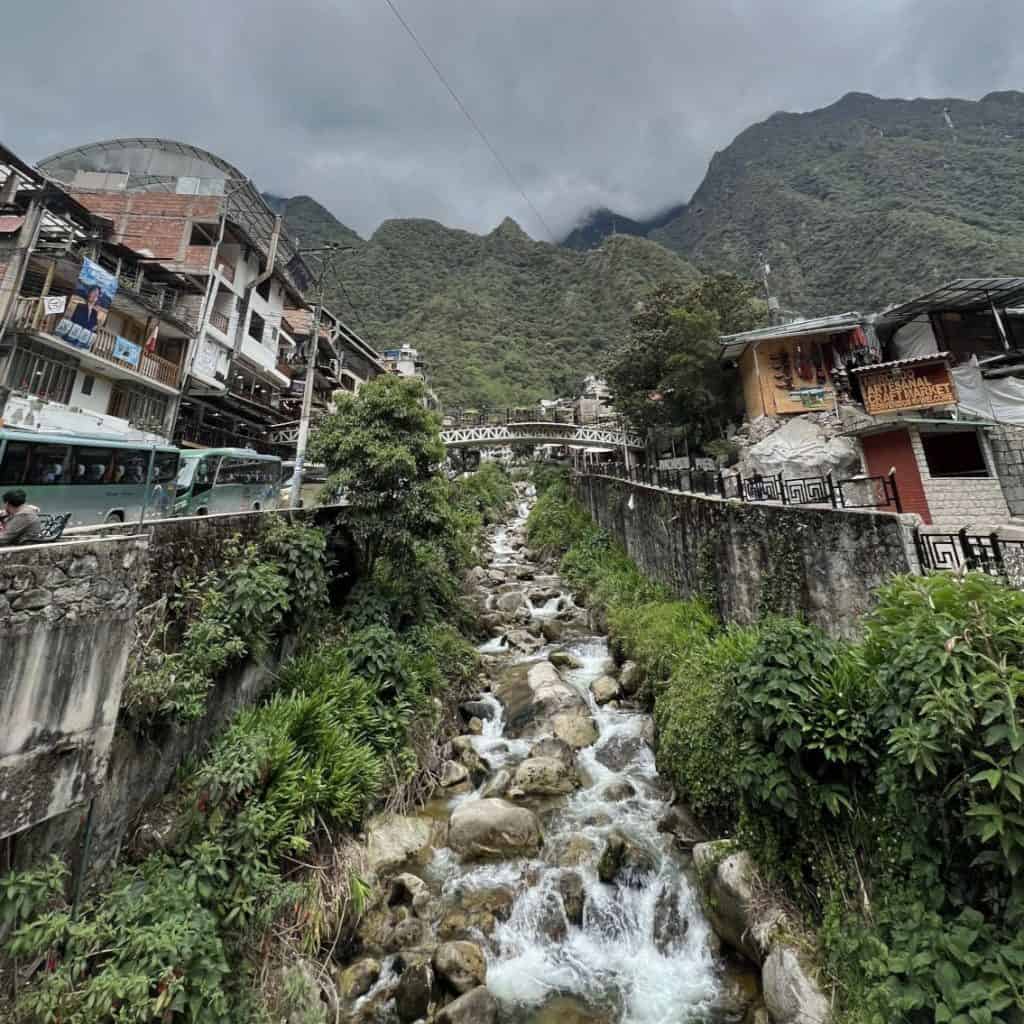
#13. Lares Trek
I’m an avid hiker and was looking for the best things to do in Peru. Of course the Inca Trail is THE hike on everyone’s bucket list, however, I love to look for experiences off the beaten track. Plus, I had heard from friends that the Inca Trail was quite dirty, so instead I opted to hike the Lares Trek.
The Lares trek is a moderate three day hike. It’s easier terrain than one would encounter on the Inca trail, but it reaches higher altitudes. The hiking experience ends with a at Machu Pichhu, just like the Inca Trail.
It is lesser known than its famous cousin, but has several advantages that should not be dismissed.
First and foremost, it is the road less traveled. Around 500 people walk the Inca Trail every day – but on the Lares Trek, you’ll be lucky to meet other travelers at all (I only met one other group in three days!).
Which, second of all, makes for a much better nature experience. I truly soaked up the stunningly beautiful surroundings without having to listen to the noise of humanity. That also gave me a chance to experience the local fauna, which wasn’t scared away by too much noise.
And third, I had a truly authentic cultural experience on the Lares Trek. I met the people who live in these mountains, I saw their way of life, and I was lucky enough to be invited into their homes.
On the way to the starting point of the trek, my guide had us stop at a local market. Coca leaves, oranges, and items for children such as soccer balls or hair ties made great gifts for the people I met, who do not often make the two day trip on foot to the market.
Instead of just ticking boxes on your bucket list, aim to immerse yourself into authentic Peruvian culture and hike the Lares trek!
By: Jenny Durnan (Girls Who Travel)
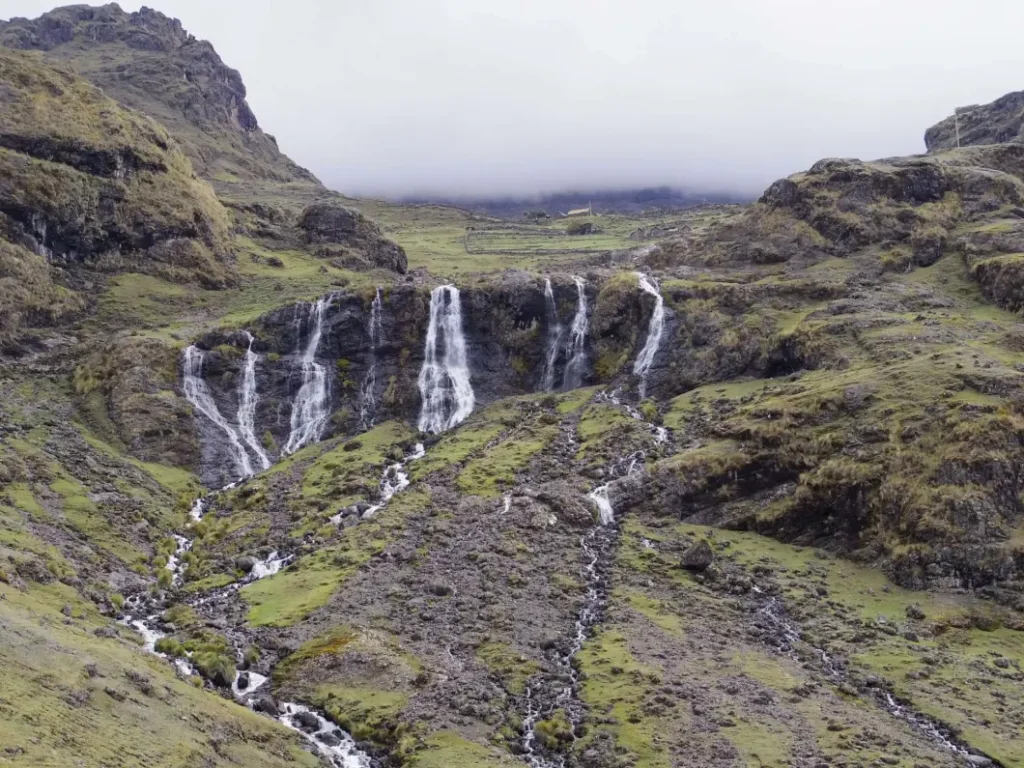
#14. Laguna Humantay
Laguna Humantay was one of the most beautiful and memorable locations we visited when in Peru. Part of the Salkantay Trek heading toward Machu Picchu, Laguna Humantay is a turquoise blue lagoon sitting at the foot of one of the mountains of the Andes range. Not only is this location spectacularly beautiful, but it also holds a large spiritual significance. Every year, Shamans travel from all over Peru to visit this pilgrimage spot. For us as visitors, we couldn’t help but admire how bright turquoise the water was.
This lake was formed from the melted glacier water of the mountain, giving it’s significant hue. When climbing up the hill to reach the lagoon, make sure to pace yourself and take your time. Laguna Humantay is located at an altitude of 4200m so there is a risk of suffering symptoms of altitude sickness.
Once you arrive, however, with the imposing silhouette of the mountain so close to you, you can truly feel the presence of Pachamama, the spirit of “Mother Nature”. With such natural beauty, it is important to help preserve it. One thing we noticed there was that visitors would stack the rocks up into cairns. This is definitely a no-no as it can harm the environment. The rocks help hold the structure of the landscape and may be used by the plants and insects as incubation or refuge. Moving them and stacking the rocks will interfere with the natural balance of their eco-system. Let’s work together to help protect Mother Nature.
🡺Read some Leave No Trace Principles here!
By: Ryan Chan (Wayless Travelers)

#15. Plaza De Armas & The City Of Cusco – ME
The Plaza De Armas in the city of Cusco, is the center of events, statues, infamous businesses, tours, elite shops, and churches. Not only that, there are beautiful gardens, light displays during the holidays, and a beautiful fountain!
Within Plaza De Armas, there’s a blend of primarily Spaniard colonial style, with touches of Peru’s ancient Incan history. It still has a specific style standard that’s followed by the locals and businesses alike.
Speaking of the history, there’s even two temples that the tow has been built around, now transformed into a place of worship and museums. As well as many Incan walls that still hold much of the town’s structure and represent the gods that they once worshiped. This is often shown in the local free walking tours throughout the city of Cusco, and the tour guides can be found within Plaza De Armas itself, they are there every day.
While exploring The city of Cusco, be sure to visit the chocolate museum, see San Blas, explore the temples, visit the museums, and shop at the San Pedro Central Market. Enjoy the history, food, and culture. I hope that you enjoy it as much as I did!
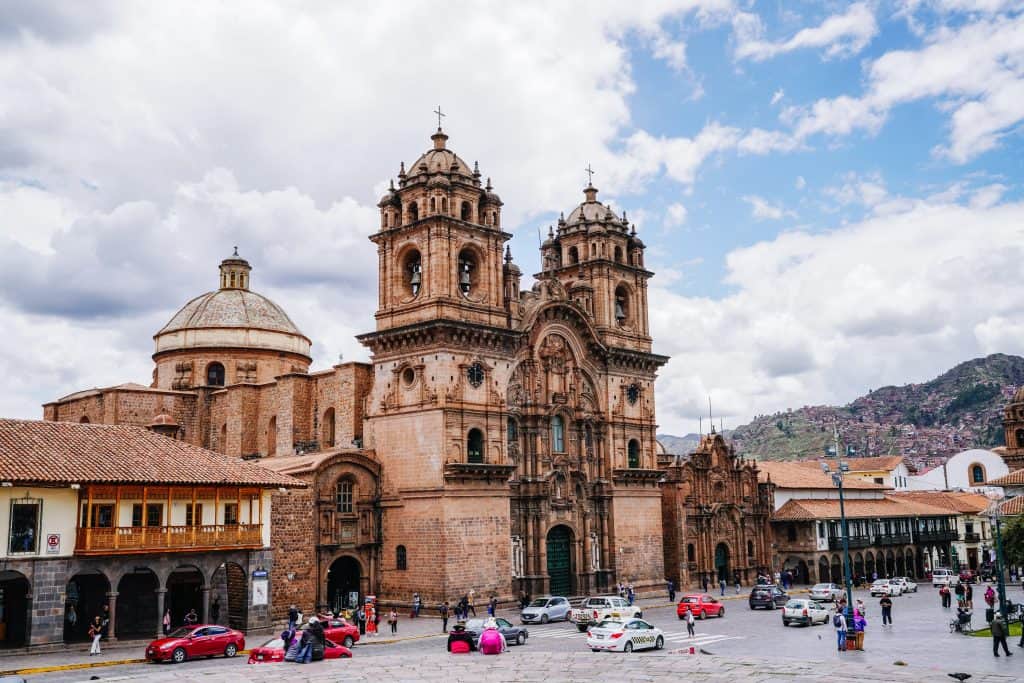
#16. Palcoyo (Rainbow Mountain Look-A-Like)
It’s well known that the rainbow mountain is a must see in Peru, but for some strange reason, Palcoyo has managed to fly under-the-radar!
While Vinicunca (the main rainbow mountain in Cusco) receives over 1500 visitors a day, we were lucky to have Palcoyo pretty much all to ourselves. Coincidentally, this makes Palcoyo a great location for sustainable tourism in comparison, less feet means less damage, yay!
The easiest way to visit Palcoyo is to book a group tour – unfortunately it’s not accessible via public transport. Our day started early as we were picked up by a minibus from our hotel at 5am before heading out on a 4-hour drive into the Andes. When we arrived at Palcoyo, Sara and I were surprised to notice we were the only minibus in the parking lot.
If you’re not an outdoorsy person (like Sara) you’ll be pleased to know that the hike to the summit of Palcoyo is much shorter and less steep than Vinicunca. It took us just 40-minutes at a fairly slow pace to reach the summit – a whooping 5000m above sea level!
Touching on altitude, make sure to have acclimatized in Cusco for a few days before attempting this hike. If you’re worried about altitude sickness, chewing coca leaves or drinking coca tea is a great method to prevent the symptoms.
If you’re looking for an off the beaten path experience in Peru, definitely check out Palcoyo!
By: Ryan & Sara (Across Every Border)

#17. Urubamba
Urubamba is an incredibly underrated city, many people hear it and think nothing of it. But after visiting, I’ve found that the city is bustling and extremely easy to navigate. Even though it’s a small city, restaurants, cafés, and markets are booming! I was especially surprised to find an array of vegan options, holistic shops, and even retreats.
This quaint city is actually located in an area called the Sacred Valley, where it’s said that Machu Picchu’s powerful energy moves through the canyon, giving it that beautiful name. See how it could be hidden and underrated?
Plus, Urubamba is well known for having incredibly fresh, clean, and delicious foods. This is because many of the locals, from the smaller towns, bring their organic and farm-fresh produce straight to the market. On the local vans, (their public transportation) you’ll see people with bundles wrapped up in tarp-like materials, bringing it right into town. It’s that fresh!
A major highlight of the town is how easily accessible it is, whether it be via van, motor taxi, bus, or even walking. I’ve lived in cities all over the world, and this was amazingly accessible and affordable! Not to mention that it’s a center hub for many of the amazing Sacred Sites.
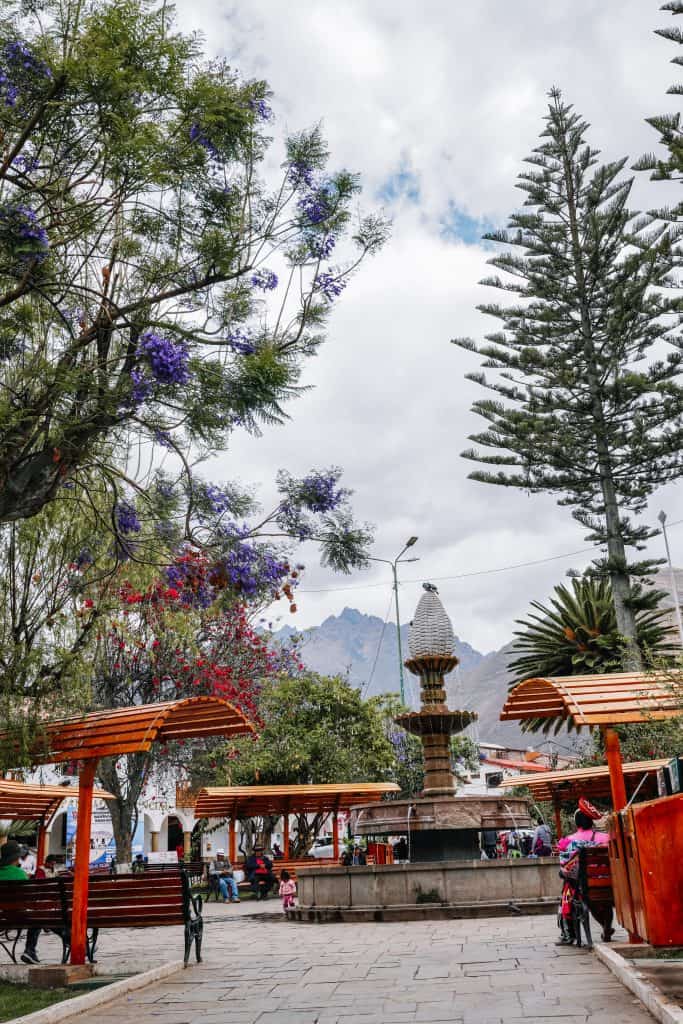
#18. Lake Titicaca / Lago Titicaca
Lake Titicaca sits between Bolivia and Peru. Not only is the world’s highest navigable lake South America’s largest, but it is also believed in Andean culture that Lake Titicaca is the birthplace of the sun.
If you’re planning on visiting, try sharing a boat with other tourists to reduce your impact on the lake’s wildlife and plant life. Plenty of tourists come to the busy docks so you’ll easily be able to find another group to go with and perhaps make new friends for life.
If a boat tour is what you have in mind, start in Puno and make your way out onto the lake via a speedboat. Be prepared to do some island hopping as you pass through at floating man made reed islands that make up Los Uros, as well as the islands of Taquille, Amantani, and Isla del Sol. Lake Titicaca does have a rainy season from December to March and thunderstorms are common during this time of year. To make the most of your trip, visit in April to November so your trip on the lake isn’t cut short by inclement weather. Rainstorms are common during the winter and boats won’t go out into the lake if there’s a promise of thunder.
By: Catherine (Adventure Knocked and I Answered)
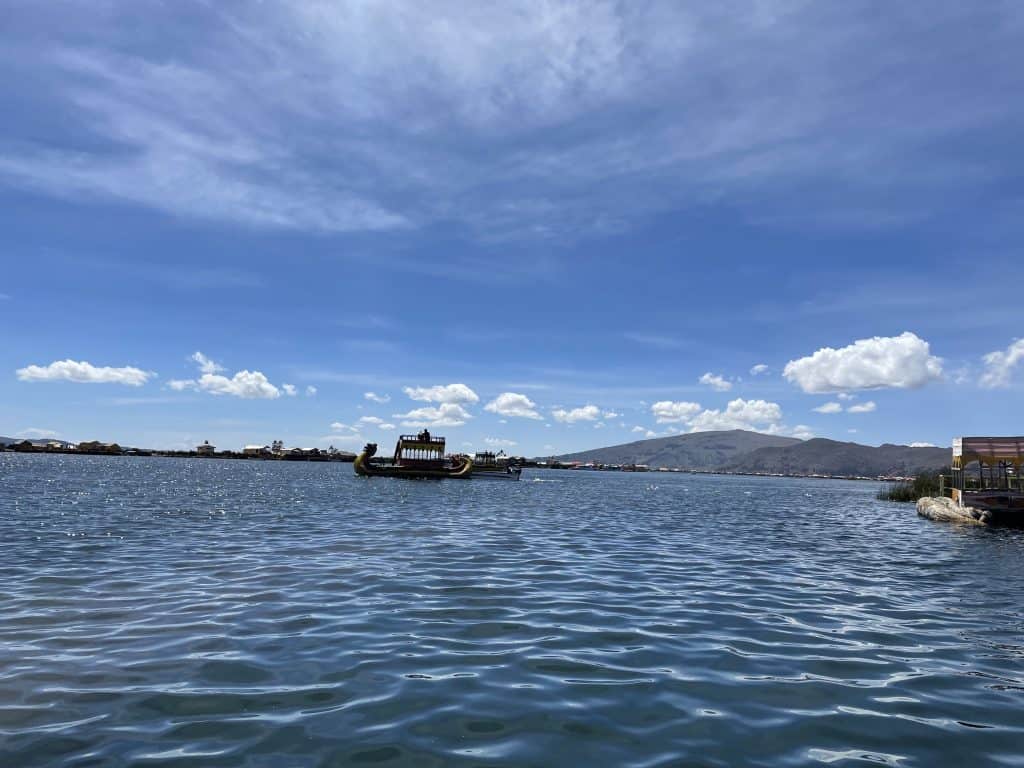
#19. Huacachina Sand Dunes in Peru
Huacachina, a stunning oasis nestled in Peru’s sand dunes, stands as a must-see destination. What makes it unique is that it is the only desert oasis in the whole of South America! Huacachina is surrounded by towering sand dunes which provides contrast to the typical green and mountains landscapes of Peru.
Huacachina might be a small town and I often recommend it as one of the best places for women to travel solo. Because of its size, you can meet people easily if you are traveling alone.
There is only one popular hostel where backpackers stay (Wild Rover Huacachina Hostel) but remember that it’s a party hostel so it wil be very loud. Alternatively, there are boutique hotels from ($45 USD) if staying in hostels is not your vibe.
If you don’t plan to stay the night in Huacachina, you can go for a day trip from Lima or Paracas. Sand dune boarding usually takes place during the sunset so it’s a good afternoon activity. The trip from Lima is about 4.5 hours and 1.5 hours from Paracas.
The desert sun can be intense and can also be cold at the same time. Bring sunscreen and a light jacket. You will go to the sand boarding spots with the dune buggy but after the activity, you can ask the guide to leave you at the best spot for viewing the oasis for sunset. You can easily walk back to town from this viewpoint.
♻️ Sustainability Tip: Sand dune boarding in Huacachina is pretty sustainable as they are using solar-powered/electric dune buggies to reduce carbon emissions (not all, but some). Huacachina is a vast sand dune desert. Only go to designated areas for sand boarding or dune buggy riding to prevent erosion of the dunes.
Thankfully, I have not seen any major trash issues in Huacachina but I’ll say it anyway: take what you brought as trash can easily get lost in the vast dunes!
The oasis is also a vital water source for wildlife around the area. You can hang out here or even go on a boat ride but make sure to respect this area.
By: Trisha Velarmino (Peru Insider)
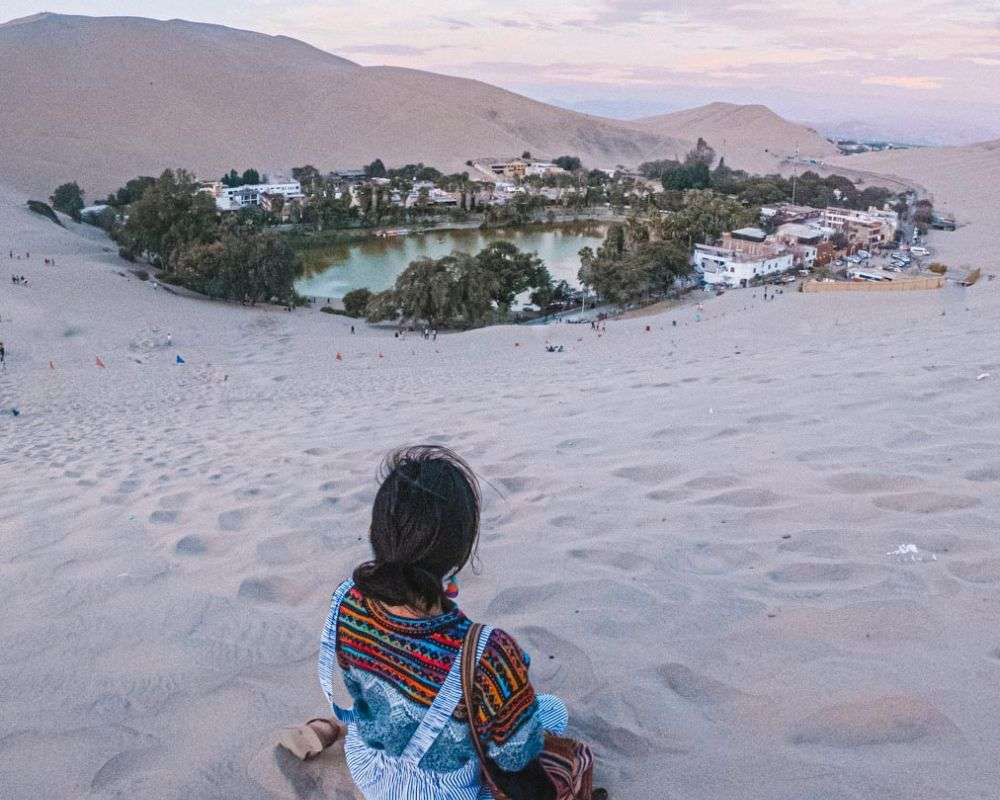
#20. Rainbow Mountain
Rainbow Mountain, or Vinicunca, seemed unreal to me until I saw it in person. It was hard to believe that something so colorful existed out there. And I guess, Rainbow Mountain really didn’t exist, or more accurately we didn’t know it existed until the mid-2010s when the glaciers melted and exposed a colorful landscape. The aftermath of climate change.
Rainbow Mountain is located south of Cusco and it sits at 17,100 ft. This is extreme altitude and you need to prepare for it. There are two main ways to visit the mountain in one day – one requires a longer drive (3 hours) and a shorter walk (0.31 miles) (.49 km), and the other is a shorter drive (2 hours) and a longer walk (3.1 miles) (4.98 km). At that elevation, most people choose the longer drive and shorter walk. You also have the option to rent a mule to carry you for part of the walk, but the very last ascent to the summit, you still have to do on your own.
The views are stunning and vast – the colorful Rainbow Mountain, the Red Valley, and the peaks of Ausangate Mountain. I remember walking past the summit, to get the view of the side of the mountain, and finding myself all alone, completely taken back by the beauty all around me. However, this is a very popular tourist attraction, and it will feel a little bit like Disney World. With trinkets sold on the side of the trail, local food specialties, mules walking next to you, and locals trying to get you to get the photos with alpacas.
Access to Rainbow Mountain is privately owned by several local communities that often find themselves in dispute and during these times authorities close the access to the mountain. As breathtaking as Rainbow Mountain is, the disputes, and hordes of visitors, and so many of them not prepared to handle the altitude, all the vendors trying to sell you something, left me conflicted.
By: Dana (Explore With Wine)

#21. Reserva Nacional De Paracas / Paracas National Reserve
Paracas National Reserve stands out as one of the must-see places in Peru. What makes it unique is that it is not that popular yet as many people skip Paracas during their trip to Peru.
It is known for it’s marine life boasting sea lions, penguins, dolphins, and over 200 bird species, including the picturesque Andean flamingos.
I lived in Paracas for 6 months and this is actually one of the places that isn’t crowded. It’s hard for this place to be saturated with tourists because the park is big (around 3,350 km²). If you really are into the outdoors, you can spend 2 days biking around the park.
There are a lot of things to do inside like biking around the park. You can rent a bike in Paracas for as low as $19 USD (71.57 SOL) per day (without a guide). Again, this park is huge so if doing it on your own, make sure to have a route and a map. The desert can be disorienting, and mobile service are unreliable!
Within the park, there are beaches with desert backdrops where you can hang out. There are also many restaurants inside the park but you can also bring your own food. Just bring all your trash with you!
The entrance fee to the Paracas National Reserve is often combined with the Ballestas Islands. It costs 17 soles ($4.50 USD) and the pass is valid for 2 days. I have not had the experience of buying these entrance fees separately but it’s cheap so it’s better to buy the package!
Sea lions and dolphins are seen year-round but you can see them better during the warmer months from December to March. The Andean flamingos and many bird species can be seen during August to October which is the birdwatching and migratory season. July to November is best for watching humpback whales.
♻️ Sustainability Tip: Given Paracas National Reserve’s rich marine biodiversity, it is given that you should respect wildlife habitats. Don’t go too close to the animals especially during breeding season. It’s best if you bring binoculars to maintain distance.
There are also many archaeological sites in the park. And unfortunately, there isn’t a lot of security due to the size of the park. Do not remove or touch any artifacts, especially in the area of the Candelabra Geoglyph.
If you plan to bike around the park, stick to the designated paths to avoid damaging the flora. Paracas National Reserve has a desert landscape and it is hard to protect vast lands like this. We must do our part to protect it!
By: Trisha Velarmino (Peru Insider)

#22. White City – Arequipa
Arequipa is the second largest city in Peru, and undoubtably one of the most beautiful cities in the country to add to your bucket list. One of the things that makes it special is its secondary name, which is the “White City”. It is known as the white city due to its notable buildings being constructed with a white volcanic stone called sillar.
We love Arequipa for its stunning architecture, delicious cuisine, and its fun alpaca factory. It is also a great base for visiting the Colca Canyon, which is the Grand Canyon of Peru, and also has some other great day trips such as hiking Misti Volcano or the Chachani volcano complex.
Make sure to try the incredible street food, especially “queso helado” which is a frozen treat made with condensed milk which is similar to ice cream, as well as the famous Pisco Sour, which is the national drink of Peru. We suggest bringing a metal straw and travel cutlery with you while exploring Arequipa, so that you can enjoy all of the different street foods, without having to use disposable plastic ones.
Definitely don’t miss out on this beautiful and fun city. You will not regret it!
By: Danielle (Scratch Your Mapa)
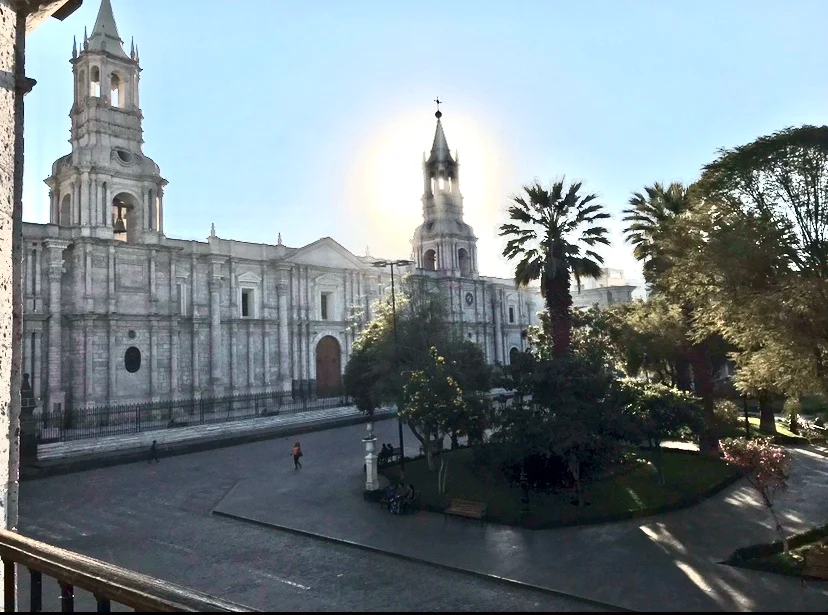
#23. Maras Salt Mines
It’s said that Maras Salt Mines have well over 300 different colored pools, each having a different level of salt deposits. This process of extracting salt has been done since the Incan times, during their salinization process. This sweeping process can take upwards of a week, but the sustainable re-harvesting of the salt in each pool can only be every 30 days, once the water and salt levels have risen again. When visiting, you’ll most likely see people harvesting.
Guess what?! They taste great! However, after they’ve been cleaned, processed, and dried. All up and down the strip, vendors are selling different flavors and mixtures of the salt from the deposit. I picked up the herbal salt and smoked salt, but they have much more variety and even some soaking salts too.
When touring the sacred sites in Peru, you’ll be given a pass that gives you access to a multitude of these different sites, so be sure to save these places on your maps and this article for later. Especially, for needing to revisit your inspirations, tips, and tricks! Also, when visiting the Maras Salt Mines, it doesn’t usually take very long, so it’ll be a great opportunity for exploring some other sites too.
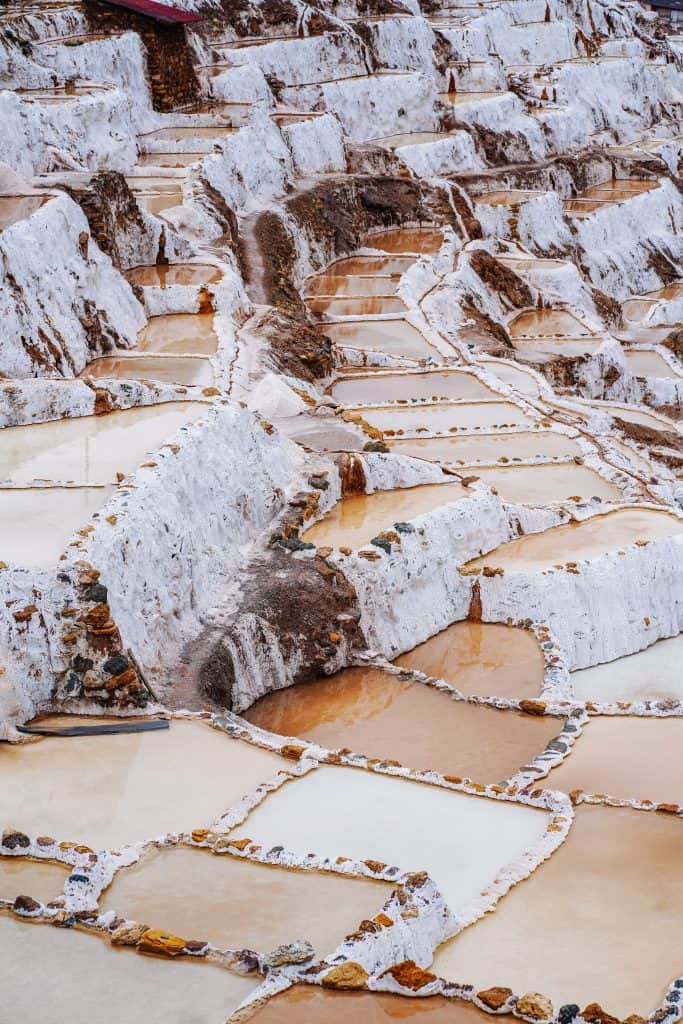
The Ultimate Gathering Of Places To Visit In Peru
Wow! Now who’s ready to jet set to Peru?! This list has to be one of the most vibrant, fun filled, and helpful articles on all the places to visit in Peru. Best of all, it’s not just any set of insights from one person, it’s from the travel pros!
It’ so much more powerful to have tips, insights, and ideas all in one place. Have you ever heard that saying, “Two heads are better than one?” Well, this is a bit more like 14 of them, ha!
Please comment below and let me if you want to see more content like this and if you found it valuable!
You May Also Like...
Serenity
Hey there, It's so great to have you here, As a sustainable travel blogger, I try to create original, captivating, and quality content to support and inspire you! So, if you feel called to comment any praise or ideas, I encourage you to. Your input is valuable to me! Pssstttt...Don’t forget to subscribe to the newsletter to get those goodies that are only available to those on the list. I don't want you to miss out on anything! Have a blissfully serene day, and thank you for being here, and I hope to see more of you!♡

Maud Commodi
Thank you for sharing such an insightful and well-written article. I appreciate the thorough research and clear presentation of the topic. Your ability to break down complex concepts into easily understandable information is impressive and beneficial for readers. I look forward to reading more of your content and learning from your expertise. Keep up the great work!
Lora Wisoky
I just could not depart your web site prior to suggesting that I really loved the usual info an individual supply in your visitors? Is gonna be back regularly to check up on new posts.
Vickie Necessitatibus
I have read some excellent stuff here Definitely value bookmarking for revisiting I wonder how much effort you put to make the sort of excellent informative website
Carmine Laudantium
you are in reality a good webmaster The website loading velocity is amazing It sort of feels that youre doing any distinctive trick Also The contents are masterwork you have done a fantastic job in this topic
Nola Consequatur
Fantastic site A lot of helpful info here Im sending it to some buddies ans additionally sharing in delicious And naturally thanks on your sweat
Gerardo Dolor
Wow amazing blog layout How long have you been blogging for you made blogging look easy The overall look of your web site is magnificent as well as the content
Beverly Recusandae
For en utmerket artikkel! Å lese den var virkelig lærerikt for meg. Du ga ekstremt godt organisert materiale, og dine forklaringer var både klare og korte. Din tid og energi brukt på forskning og skriving av denne artikkelen er sterkt verdsatt. Enhver som er interessert i dette emnet vil uten tvil dra nytte av denne ressursen.
Shorey
I was reading through some of your posts on this website and I think this web site is rattling informative! Keep on putting up.